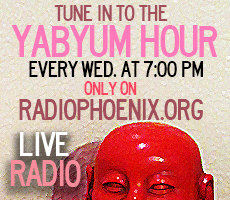
Oooooo, reflective….
by Brandon Kellum
–
It’s no secret, streaming music is no longer the future, it’s the now. With platforms like Spotify and Apple Music boasting over 50 million monthly users, paying to download individual albums is going the way of the cassette tape… just don’t expect the same retro revival.
So if you’re like me, you’re probably wondering “How do independent artists with only a few hundred active followers on their social platforms manage to pull hundreds of thousands of plays on the popular streaming services?” Well, lucky for you, I’ve spent the last 7 years unknowingly learning a few lessons through trial and error and I’ll be sharing those with you today.
THE BASICS
First let’s talk basics. We’ll assume that you’ve already recorded the next big thing that everyone needs to hear. I’ll also guess that you’ve done a bit of research to determine how you’re going to distribute it — if not, I recommend looking into CD Baby, DistroKid or Tunecore. Each aggregator allows you to set a date to push your music to all the major digital platforms for relatively cheap (under $50).
RELEASE DATE
So now that you know how you’ll release your music, you have to decide when to release it. This is the part that all artists inevitably suck at. We record something and immediately want to put it into the world before we’ve even made it home from the recording studio. PATIENCE. If there’s one thing that you take away from reading this, it should be that timing is everything. Not only planning for the day of the week (release Tuesday is now release Friday) but also planning around what other major releases will be competing for those limited spots on playlists such as Spotify’s Release Radar and Discover Weekly.
PRE-SAVE CAMPAIGN
Once you have a release date set, you’ll want to start “campaigning”. A release date is only as good as the people who know about it. That’s why the weeks leading up to your release will be what dictates its success.
Log into your distributors site and find your album or song’s URI (you can Google this process if needed). This is what will allow your fans to pre-save the music before it’s available. That means on day 1 they’ll see the song in their Release Radar and also receive an email reminder. What you’re banking on is for your core fan base to set the pace for your success. Spotify will be measuring every time the song is played, saved and added to playlists. Get creative with how you can encourage people to take these actions. The more each happens, the more Spotify’s algorithm will share your song.
SHARING
It’s now release day and your music is available to the world. It’s obvious that you should share your Spotify links across social media but what you may not know is that you can optimize how and when you share to maximize your chances of getting added to key playlists.
Discover Weekly for example updates every Monday with 2 hours of music catered to each individual user. If you’re goal is to land a spot on it, improve your chances by sharing a specific song link across multiple platforms 24-48 hours before the playlist is updated. Even better, have all the members of your band do the same. To the Spotify algorithm, this will appear as organic “buzz” and trigger it to present your song in more playlists.

Completely generic, totally applicable picture.
PLAYLISTING
If you’ve made it this far, you probably already know the importance of playlists on Spotify. Playlists allow your music to reach listeners beyond your existing circle of friends and fans. Although playlisting could be an article of its own, here’s what you need to know.
For the purpose of this section, there are 4 key types of Spotify playlists:
User Generated
User Generated playlists are created by you, other users, or brands and are independent from Spotify. Many are small in terms of follower count but all can play a huge role in your success. Remember, it’s not only about the total number of plays, it’s about letting the Spotify algorithm know that people are adding your music. To find these, search for key genre terms using the Spotify search bar. You can then click on the users name which will either give you contact information or will be tied to their Facebook account. When pitching your music to be added, be clear, concise and focus on what’s in it for them. Sharing their playlist is a common perk.
Collaborative
Collaborative playlists are much like user generated except these playlists allow for anyone to add music. Finding relevant collaborative playlists are a slam dunk in terms of success rate. My suggestion for finding these is searching terms such as “Collaborative Playlist” on Google, Facebook, Twitter and Reddit.
Curator
Curator playlists are what everyone aspires to get on. These are maintained by Spotify and boast the largest numbers in terms of followers. Until recently, it was fairly difficult to go from zero to curator, but now Spotify is allowing direct submission of singles prior to release.
Algorithmic
Algorithmic playlists are where you’re likely to see the best results. These playlists are created using every factor mentioned up to this point. If you’ve selected the perfect releases date, ran a successful pre-save campaign, shared your links and encouraged users to take action when listening to your music, you are now more likely to catch the algorithms attention.
PLAY FOR PLAY & PAY FOR PLAYS
At its core, Spotify wants to present you with music that will keep you listening on the platform. Although there are several ways to “game” the system and boost illegitimate plays, these will only hurt you in the long run.
If you promote play for play (I listen to yours, you listen to mine) or pay for plays, Spotify’s algorithm will no longer know who to present your music to. The telltale sign of this is an artist who’s “Fans Also Like” section is littered with bands you’ve never heard of or don’t make sense for their sound. In turn, when placed alongside those artists, users are likely to skip your song and its chances of organic discovery will be dead it in water.
CONCLUSION
It’s not uncommon for artists to bash new technology and trends. Just remember each can be an opportunity to use to your advantage. You’ve spent the time and money pouring your heart into your project, so release it right!
There’s no silver bullet for getting more Spotify plays but there are ways to go about it more strategically. Once one song gains some traction, you’ll likely notice the next will come a little easier. Be wary of shortcuts and companies that promise results and don’t be afraid to learn as you go.
PRO TIPS:
Track your success and reverse engineer that of others by using services such as:
~
 Brandon Kellum is the singer for American Standards- a band that has little to no actual singing. Check out American Standards on Spotify or any streaming music platform.
Brandon Kellum is the singer for American Standards- a band that has little to no actual singing. Check out American Standards on Spotify or any streaming music platform.





